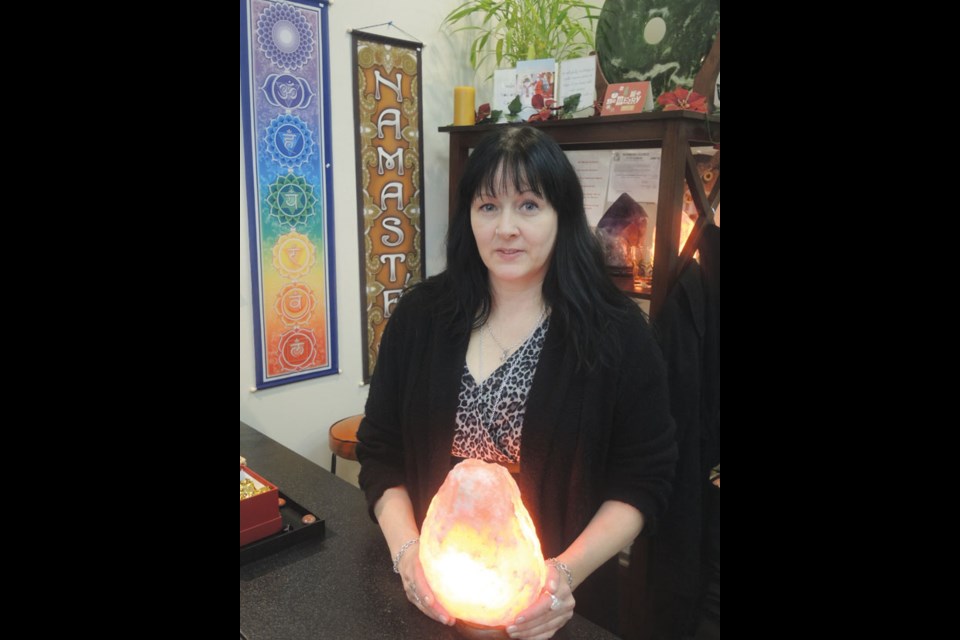It's no coincidence that decking the halls, lighting candles and feasting with friends and family are all hallmarks of the season - be it in celebration of Christmas, Hanukkah or Diwali.
It's also no coincidence that they all happen around the time of the winter solstice.
Many of the traditions in today's organized religions have roots that extend back to the days of pagan rituals.
Putting up a Christmas tree, for example, comes from early Germanic pagans who used the evergreen as a symbol of something that would last through the winter and bring hope for the spring.
The Druids, a pagan subsect, were agricultural folk, and used the winter solstice to honour the land.
"Because it's cold and the days are getting darker, we haven't been able to spend that much time outside," said Suzi Stretton, manager at Serendipity's Backyard in Steveston.
"So instead, we bring the greenery into our homes. It's another way to become closer to nature and honour it," added Stretton, a self-identified pagan.
In pre-Christian times, pagans believed greenery would encourage growth in the spring.
They would also hang mistletoe as a symbol of peace and prosperity, as well as a way to bury grudges (kiss and make up).
Hoping the sun returns "The winter solstice is really a time to honour and celebrate life, like many other religions and cultures during this time," said Stretton. "What's cool about it is that it goes way, way back, and it's interesting to see how these stories develop and tweak along the way, whether it be into Christianity or other religions."
The main purpose of the celebration was to encourage the sun to return after the darkest days of winter.
Not understanding the days would become longer regardless, ancient pagans would light candles to aid in bringing the sun back.
"They figured these rituals were working, so they kept doing it," said Stretton.
Candles would symbolize hope and warmth. Ultimately, it became about defeating the darkness and celebrating the Unconquered Sun.
"It's interesting that Christianity celebrates the rebirth of the son, while winter solstice celebrates the rebirth of the sun," said Stretton. "But in both cases, light means hope."
Similarly, the play of light and darkness features in Judaism and Hinduism as well around this time of year. The lighting of the menorah during Hanukkah symbolizes overcoming politically darker days of oppression, while Diwali (the festival of lights) signifies the victory of light over darkness and knowledge over ignorance.
Across the board, the celebrations encourage perseverance through the darkest days of the year.
"The dead of winter was a tough time back then," said Stretton. "It was the time when people lived or died, they had to be careful. If you got sick during this time, there was a good chance you wouldn't survive. Managing the food supply was important."
Food and feasting, whether in the shape of a traditional Christian turkey dinner or a mithai (sweets) consumed during Diwali, remains an integral part of the end-of-year festivities.
Early Christians celebrated in January The Druids were the ones to mark Dec. 21 as winter solstice after careful mathematical calculations concerning the position of the sun.
Centuries after them, the date of winter solstice shifted to Dec. 25, according to the Julius Caesar calendar (a miscalculation eventually resulted in the return to the Dec. 21 date).
During the beginnings of Christianity, Christmas was celebrated on Jan. 6, the night of the Epiphany. However, since early Christians were having a hard time convincing pagans and the newly converted to stop celebrating winter solstice, they changed the date of Christmas to Dec. 25.
As winter solstice celebrates the return of the sun and the lengthening of the days, early
Christians would connect the sun symbolism with the figure of Jesus Christ.
While Christmas continues to be by far the largest celebration in December, there is also a growing trend back toward pagan roots.
According to the 2011 National Household Survey, 25,495 Canadians identify as pagans, up from 21,085 in 2001.
"There is a type of reclamation happening, especially around the Wiccan religion," said Stretton, who distinguishes between Wicca, the religion, and the practice of witchcraft, a term that has led to previous negative connotations surrounding witches.
Wiccan versus witchcraft Where witchcraft focuses on the magical aspect, Wicca, like other pagan subcultures, celebrates nature and humans' connection with their surrounding environment.
"It's about learning to live with the seasons and understanding how we feel during specific times," said Stretton.
On Stretton's mantle at home, sits a broom, cauldron and candles. Each item symbolizes something from the Wiccan culture. The broom represents clearing space and clutter - an antithesis to the mode of transportation for the evil witch - while the cauldron is for fire, which purifies and rids the space of bad energy. The greenery and holly honour nature.
While few would call themselves pagan, many on the west coast do call themselves spiritual, but not religious. And that spirituality is rooted in their relationship with nature.
The quest for meaning, a connection with nature and the celebration of food, friends and family appear to be rooted in all forms of faith.



